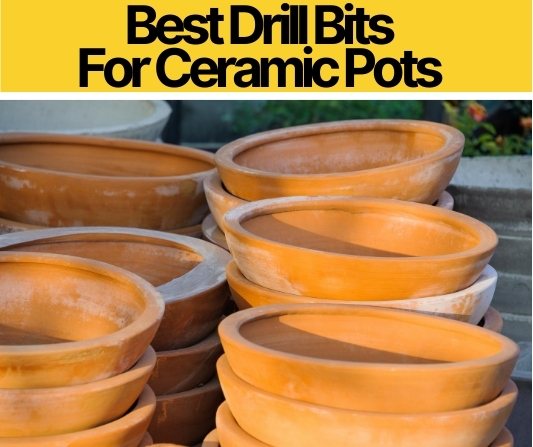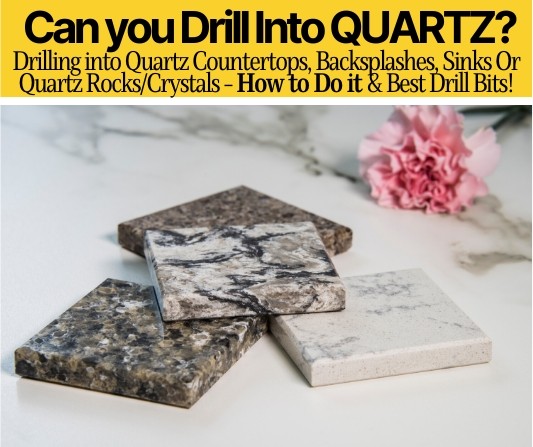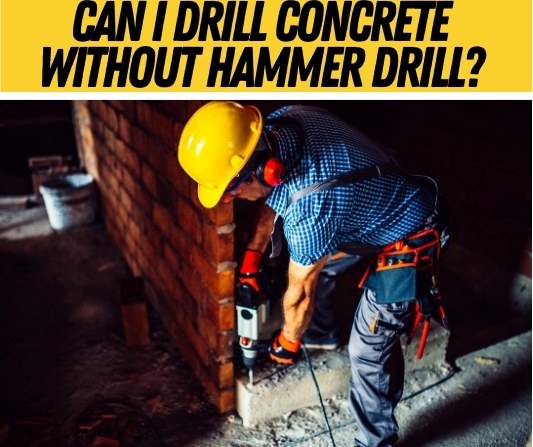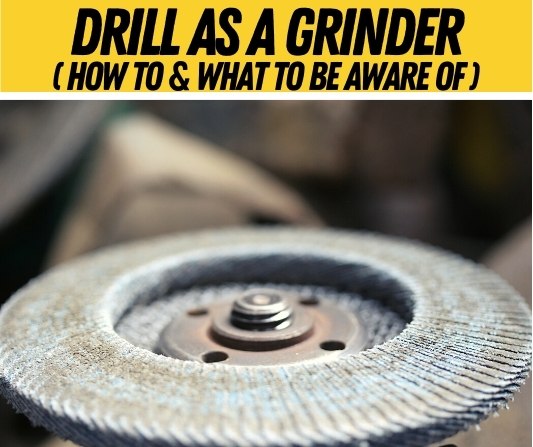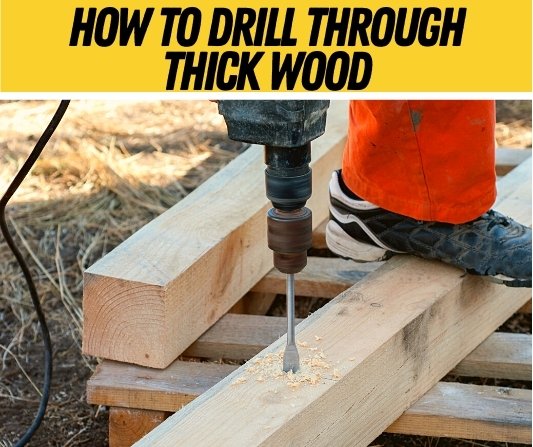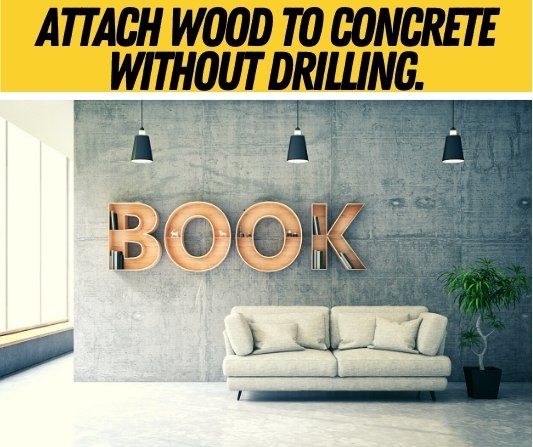 Need to install some hangers or rails in your bathroom?
Need to install some hangers or rails in your bathroom?
Are you clueless when it comes to bathroom remodeling? Or maybe you have no idea when it comes to working with tiles because I can guarantee you that it is not as simple as you think
But don’t worry, in this article I will outline the dos and don’t when it comes to drilling bathroom tiles and tell you how to drill each different tile.
What drill bit for bathroom tiles?
Whenever it comes to bathroom tile drilling, depending on how smooth the surface is, a carbide tipped drill bit shall suffice or a diamond tipped drill bit as it can literally drill through anything. Normally, if your bathroom tile is glazed then a carbide tip will not be as effective as a diamond tipped drill bit. The only downside is that diamond drill bits can cost twice as much as carbide drill bits.
If you choose any other drill bit like a twist one that is designed for wood and metals, you will have an extremely hard time trying to make a hole in bathroom tiles. This is because the outermost layer is a glaze that makes the surface smooth and slippery. Your drill will end up sliding around and at its worst, you can definitely injure yourself if you do not use the drill properly.
With this in mind, you will need carbide-tipped (or diamond) drill bits in order to work with ceramic as there is a lot of science involved but I won’t bore you to death with that until later on if you truly are curious about the properties of a carbide-tipped drill bit. I’ll give a run down of which which bits are suitable for bathroom tiles
Twist drill bit
This the standard drill bit that everyone gets when you buy a drill. This drill bit is equivalent to the one size fits all approach, meaning it is very versatile but the quality of drilling might not be that great. I would only recommend this drill bit if your ceramic tile is not glazed and you do not wish to spend a few dollars for better drill bit meant for ceramics
Step drill bit
This drill bit works on metal and wood also. This one is responsible for polishing and expanding the size of the hole after the initial drill. This tip is optional if you want to make your holes bigger but unless you’re installing something huge, I do not think you need it. This would be ideal for metal tiles after using the twist bit
Tile drill bits
This drill bit is ideal for drilling a hole into all kinds of ceramic tiles. This tip comes with a carbide finish, meaning it has carbon and another metal mixed into it. This tip can smash through the glaze layer and the tip has gripping properties that allow for clean finishes. The downside is that it does take a lot more elbow grease to make nice clean holes. Here is another good set specially for tiles.
Spearpoint drill bit
A great alternative to the carbide drill bit, it has a spear tip to ensure precise drilling so that you do not damage the glass or ceramic completely. However, if the ceramic is glaze then I highly recommend using the tile drill bit instead to avoid slippage unless this bit is also carbide tipped like the tile bit
Can I use masonry/concrete drill bit on tiles?
Unfortunately, masonry/ concrete drill bits are not fit for this job as they are not strong enough to penetrate the bathroom tiles without causing any cracks in your tiles. Especially if you are dealing with porcelain tiles using these drill bits on them will be a nightmare as you will watch your drill slide around the tile and possibly injure yourself while trying to do so. At minimum the tile needs to be carbide or diamond tipped to even consider drilling glazed bathroom tiles. If the tile is not glazed however, then the carbide tipped is optional. The drilling job would be a tad messier than if you used a carbide tip as carbide tends to make sharp punctures throughout the tile.
Also Read: How to Drill Concrete Without Hammer Drill
Can I use a metal drill bit on tiles?
Metal drill bits or also known as wide angle drill bits are not suitable for a lot of ceramic work. These tips will make your drilling job a lot messier than it needs to be. These drill bits will shatter the tiles easily if you are working with porcelain and natural stone tiles. However, if your tiles are metal and slate, this drill bit would work fine and give a clean enough finish as these tiles can grip to the drill bit better than other types of bathroom tiles
Drilling through bathroom tiles
This task may seem daunting at first but we are here to show you how it is done. The first step in drilling your bathroom tile is to measure. Grab that measuring tape and mark the spots of where you want to drill holes in. Use masking tape to make X marks on the tile. Not only does this tell you where to drill but it also helps with the drilling as the masking tape gives the drill bit something to grip onto while drilling. If you have quite a few holes to drill, you may also want to consider creating a small template with a small block of wood. Simply bore a hole through the wood that’s the same diameter as the drill bit you’ll be using and place this over the area on the tile, using the hole as a guide for the drill by holding it in place with your free hand. If you want to utilize another tool, you can purchase a drill guide. These are plastic stencils that ensure you drill the hole straight through at an exact size.
After pinpointing where you want to drill your holes you can now begin the drilling process. It is very important that you drill slow in the beginning. If you full send and drill at the highest rpms and expect it to produce a clean hole, well you’re wrong. This method will only overheat your drill very fast and produce excess vibrations that can shatter your tile in an instant. Speaking of overheating, this is bound to always happen when you are drilling to always try to cool the drill bit down by putting a fan facing toward it or spray some water at the hole. Not only will this cool down the drill but it will also catch the dust that is created from drilling. If you want to go the extra mile, you can purchase a drill spray system which is basically a coolant intake but for your drill. This tool is connected to your drill and it directly injects water to cool the drill down immediately. This type of device comes in handy when using carbide tipped drill bits as they will stop as soon as they get too hot and need to be kept cool throughout. Diamond tipped bits will continue to work even when they heat, as long as you allow them to cool down periodically. The main thing to remember though if you want your drill bits to last is to keep things cool and don’t apply too much pressure. Most tiles do not have a metal frame behind but if it does, you will need to drill through that layer also.
Porcelain Tiles
When it comes to porcelain, it gets very tricky to work with. This type of glazed ceramic tile is lethal to most conventional drill bits except for any carbide tipped and diamond. Only with these two types of drill bit will you be able to achieve a very fine finish. Make sure to tape out where you want to drill as the slippery surface can even make diamond drill bits slide occasionally. If you are dealing in an area where water can seep in, apply silicone into the hole before you thread it in and let it cure for 24 hours to ensure water does not go in and cause internal rust.
Ceramic Tiles
Regular drill bits can make a rough and ugly hole, and they may cause the tile to crack. Tile bits with ground tungsten carbide or diamond tips are the best for this purpose. They are both designed to drill into hard surfaces, and both of them puncture the tile with a cone-shaped hole.
Terracotta Tiles
Drilling into terracotta tiles will be a smooth run as it is mainly hardened clay. Usually terracotta is not glazed meaning there is some flexibility if you do not have any carbide or diamond tipped drill bits and you are stuck with metal and masonry bits. Since the tile is not glazed, it makes it more susceptible to forming cracks, so please proceed with extra caution as you drill through this type of tile.
Marble tiles
Drilling marble is also very similar to drilling porcelain, you will need a carbide or diamond drill bit. It is also possible to use metal drill bits when dealing with these natural stones but more precautions must be applied. Whenever you drill through marble, always start by making an imprint onto the stone. You can accomplish this by drilling into the stone for a few seconds and it will make a small crater. This allows you to position your drill better and keep it from drilling at a curved angle. Keep a water bath next to you so you can dip the drill bit in after every drill to prevent seizure.
Glass bathroom tiles
Carbide drill bits would actually work better than diamond drill bits in this scenario. If you have a glass bit that is carbide tipped then that is the perfect drill bit. With glass, it is harder to drill without cracking the tile as if it does crack then the whole tile needs to be replaced. Lots of water is needed for this drilling and you can set up a mini water bat around the drill if the tile is on a flat surface. All you do is get some putty and make a mound then fill it with water and begin drilling.
Granite tiles
Diamond drill bits are more preferred than carbide drill bits as the outer layer of granite is harder than most tiles. There is a specific technique when dealing with granite tiles. You must water the drill bit every 5 seconds to ensure maximum lifetime of the drill bit. You would start to drill at an angle of where the hole should be drilled (roughly 45 degrees) and then you can start to level out the drill at 90 degrees once the crevice is deep enough. In order to get a smoother hole, oscillate the drill while it is drilling (move in circular motions while keep the direction straight)
Slate tiles
Slate is actually the easiest material you will ever work with in tiles as it is really easy to create holes. This is where you get more flexibility when you do not have the right drill bits meant for tile. It is even possible to use a nail set and hammer to create your hole but if you want a more uniformed look, masonry bits or diamond bits will get the job done. Be sure to pour a bit of water to cover the drill bit before drilling.
Metal tiles
This tile is the most ambiguous of them all as we all know there are hundreds of different kinds of metal. Metal drill bits could work in this case as those are composed of steel which is more durable than a lot of different metal types. However, if you have diamond or carbide that will also work. You must surround the area with a water mound as metal on metal contact will produce flying sparks. Be sure to wear gloves and safety glasses before operation. Drilling is straightforward and there are not fancy methods when it comes to metal tiles
Can you use a hammer drill on bathroom tiles?
Hammer drills are not recommended when drilling ceramic tiles as the force of the hammer drill is too powerful. The brute force of the hammer drill will cause a large impact on the tile, making it crack. Hammer drills are mainly for creating bigger holes so just use a diamond tipped hole saw if you need a bigger hole than what your drill bit can create

